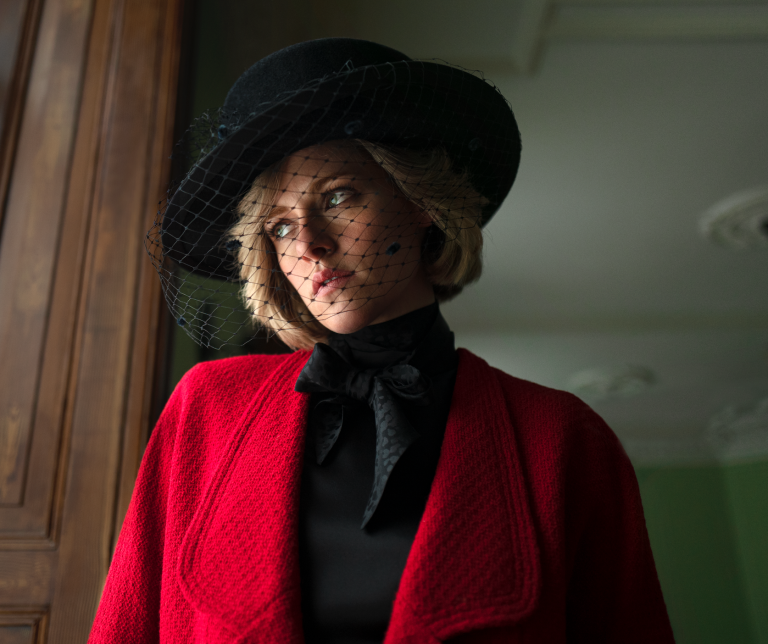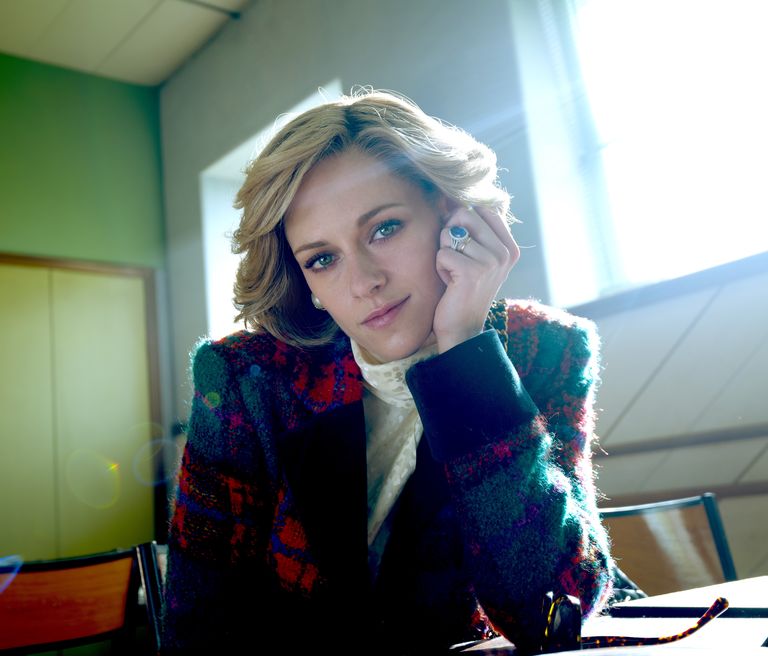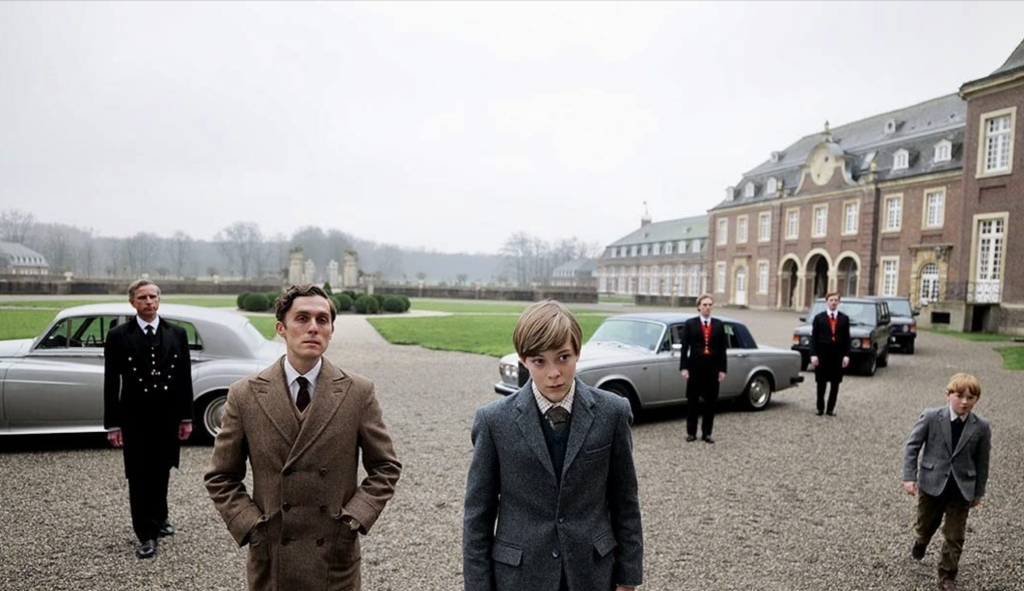
Synopsis : The marriage of Princess Diana and Prince Charles has long since grown cold. Though rumors of affairs and a divorce abound, peace is ordained for the Christmas festivities at the Queen’s Sandringham Estate. There’s eating and drinking, shooting and hunting. Diana knows the game. But this year, things will be profoundly different. SPENCER is an imagining of what might have happened during those few fateful days.

An Exclusive Interview with Director Pablo Larrain on “Spencer.”
Q: This film reveals how Diana found her own identity. It’s told pretty much from her perspective; even though she was seen a lot in a public as compared to other royal families, we didn’t really know much about her. With writer Steven Knight, how did you approach her as a subject? Since the royal family has so many secrets, where did you start?
Pablo Larrain: There’s so many things… Diana was an important element of our culture, but I had an idea about her searching for her social identity; then when we started the process, we discovered that we were also making a movie about her motherhood, you know. We had to get right into our fables about her throughout the film. Because there is so much throughout the duration of her life and her legacy, we decided that it might be a good that we just focused on three days of an essential time in Diana’s life.
Q: Having interviewed Kristen Stewart a couple of times before, what’s interesting about her was that, there was this uncertainty or mystery about her which I found similar to Diana in a way. What elements about Kristen that you found fascinating made you decide to cast her in the lead role?
Pablo Larrain: There’s a lot of information around Diana’s TV shows and other things, but you don’t really know who she was and that’s probably because she was very mysterious. I think that Kristen can play that mysteriousness well. She’s a very particular actress, very skillful, but more importantly, she can create an interesting bridge of emotion between her character and the audience.
Q: What’s important about this film was that you show how Diana was taking care of her kids The film seeks to illuminate more about her motherhood. She was being a mother to William and Henry. Even though we really never knew their conversations in real life, how do you approach that?
Pablo Larrain: It’s a process of understanding. She behaved like most mothers would behave with their children. It’s as simple as that. I think that’s something we can all relate to. Diana was a lot of things, but she was a mother first and she was raising two boys. So, since we didn’t know the intimate details in reality, we developed a fiction. But I didn’t think we needed to know because we were making a fable take. We worked around what could have looked like her relationship among them, something that’s relevant to how to build a relationship among members of a royal family that’s trapped by so many things from history and tradition related to the institution of the Royal family.
There’s always a way to find a simple and human enlightening situation that involved the three of them. We had a little actors, our boys were fantastic to do that. That was very interesting. And I think Kristen got a very interesting connection with them on the set that they were fantastic.

Q: Diana must have had hundred of outfits, wearing many of them in the public. The color of the clothes that she chose were like a statement in a way. How did you collaborate with the costume designer to recreate a sense of this statement or changing her identity in a way?
Pablo Larrain: We worked with costume designer Jacqueline Durran who made the initial selection of pictures. We looked at hundreds, maybe thousands of pictures about Diana’s clothes. We initially decided what we liked, and when she was wearing them — what period of her life when she wore them. We also were concerned about how it looked when Kristen wore them as well. Then, what clothes would look well in the scene.
We worked also with production designer Guy Hendrix Dyas to see the interaction between the clothes and the background. Then, of course, Kristen got involved and we did many fittings and tried different things. Diana had a very audacious taste and she made a lot of good and interesting decisions. She was a fashion and pop icon. Also, in my opinion, she was someone who knew a lot about color, not only about fabrics, but about some cuts and the weight of the fabrics. It’s very beautiful to see, over the years, how her identity was built by the choices she made through her clothes.
That’s something we wanted in the movie. We want to have the option as to what she looked like. Some of the things that Kristen wore in the movie were very close to the actual clothes Diana wore. And some of the clothes were inspired by Diana’s clothes. So there’s really a mix, but it mostly comes from Jacqueline’s team and they really did a brilliant job.
Q: What about your aesthetic choices in the camera work? There were these really close-up shots, and there were the tracking shots; what was your intention behind those shots. It really help to brings us into Diana’s mindset.
Pablo Larrain: Every decision was made to project Diana’s point of view. We wanted to be as close as possible to Kristen and be from her perception and be her point of view. So, they are different visual approaches, camera movements and settings. We were intentionally really close and connected to Diana’s process. That sort of mandated all the filming challenges we had.
Q: What did you think were the qualities of Diana’s that people related to?
Pablo Larrain: My mother was really fascinated about Diana as were so many millions of women around the world. I initially wondered what my mother saw in Diana. Why did she care about Diana? When I was growing up, I started to understand that, even though Diana was born to a life of privilege and was close to royal family, she was a regular woman, very ordinary in a way. But she was an ordinary person under very unusual circumstances. That might be the factor that made people feel close to Diana. She also like the food and pop music of those times that many of us could relate to.

Q: Diana’s relationship with her staff was also intriguing as was, in particular, her relationship with her dresser, Maggie, played by Sally Hawkins.
Pablo Larrain: We wanted to turn your head towards people that Diana was actually talked to in real life. She was isolated by the royal family, particularly the year we focused on — maybe around 1991 or 1992. So we spotlighted the people that she had important relationships with. We did that because while she was with them, she felt more real and, in a way, more honest to them. When she was with the royal family, she has to act or behave properly.
Q: During your process of research, what were the most surprising elements that you learned about Diana?
Pablo Larrain: I think the way she tried to put an end to her marriage, and also incredible relationship she had with her kids, William and Henry. I think The way she takes care these kids was very interesting, so we tried to honor that in this film.
Q: What do you want audiences to take away from this film?
Pablo Larrain: We all have a different perception of who she was because there’s was so much information about her, and so many people had an opinion about who she was. I hope this movie will contribute to how important her life was so that it can encourage many people around the world to have the life that they want to have, to feel free and find a path that they need to [find]. That’s what I think is a good representation of Diana’s life and what it meant.
Here’s the trailer of the film.

